Making an investment in solar power is a smart decision, but installing it yourself could be a big mistake. Most DIYers, who want to take on a solar project, may do it for the learning experience or to save money. I think it is great that individuals want to get educated about how solar works, but I don’t think they should do that at the expense of their own safety. Here are a few reasons why you may change your mind about a DIY solar installation:
- Electrical Work is Dangerous – With the wiring involved in solar electric installations, there is always the risk of electrocution if precautions aren’t taken. I’m not sure about regulations in other states, but Massachusetts requires that solar electrical work be done by electricians.
- DIY Solar May Not Qualify for State Incentives – Most people take on a do-it-yourself solar project because of the cost savings. They don’t think about the rebates they may be sacrificing if they execute the project by themselves. States, such as Massachusetts, require that a licensed installer do the work in order to qualify for the Mass Solar Loan program and associated incentives.
- DIY Solar May be Ineligible for Grid Interconnection – Most utilities allow renewable energy systems to interconnect to the grid, but impose standards on system design. A grid-connected PV system allows you to draw power from the grid at night when you are not generating solar energy. It also allows you to push excess solar power back to the grid during the day if you are generating more than you need.
- Solar Should be Built to Last – DIYers may not have access to the same high-quality components (panels, inverters, mounting equipment) or the techniques that solar installers generally use. Systems are designed to be on your roof for 25 or 30 years so quality of the installation and the durability of the equipment are especially important.
- An Installer Can Customize Solar for your Needs – Distributors now offer packaged self-installation kits. These kits don’t offer much flexibility with the design and could offer limited power output. If you contract the work, the contractor can customize the installation to maximize your roof space for power production.
Before you proceed with a do-it-yourself solar installation, I recommend you contact a local solar installer, such as Brightstar Solar. They can talk about the differences that you expect with DIY project versus a contracted solar installation. Brightstar Solar is a Massachusetts solar installer that will work with our customers to navigate the installation process, maximize incentives, and manage the rebate and permitting paperwork involved. If you have a home or business in Massachusetts and are interested in solar power, please contact us for a free evaluation.

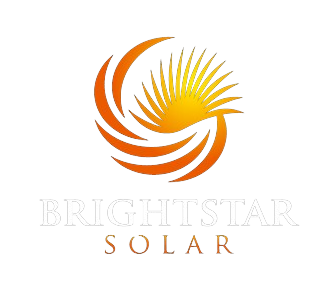
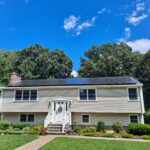

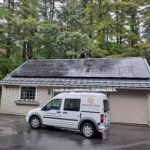
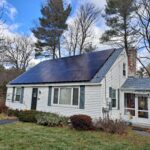

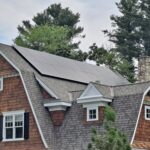
Pingback: Tweets that mention The Drawbacks of DIY Solar Installations — BRIGHTSTAR SOLAR -- Topsy.com
Thank you for your sharing. I am worried that I lack creative ideas. It is your article that makes me full of hope. Thank you. But, I have a question, can you help me?
Thanks for sharing. I read many of your blog posts, cool, your blog is very good. https://www.binance.com/en-IN/register?ref=UM6SMJM3
Can you be more specific about the content of your article? After reading it, I still have some doubts. Hope you can help me.
Having read this I thought it was extremely enlightening. I appreciate you spending some time and energy to put this informative article together. I once again find myself personally spending way too much time both reading and commenting. But so what, it was still worthwhile.
Díky moc!|Hej, jeg synes, dette er en fremragende blog. Jeg snublede over det;
It is important to be prepared for the emotional toll that this may take on you.
555
I don’t think the title of your article matches the content lol. Just kidding, mainly because I had some doubts after reading the article.
Your point of view caught my eye and was very interesting. Thanks. I have a question for you.
Can I just say what a reduction to seek out somebody who truly is aware of what theyre talking about on the internet. You undoubtedly know how to convey a difficulty to gentle and make it important. Extra folks must read this and understand this aspect of the story. I cant imagine youre no more widespread since you positively have the gift.
I am really inspired together with your writing skills and also with the format on your blog. Is this a paid subject or did you modify it your self? Either way keep up the nice high quality writing, it is rare to peer a great weblog like this one nowadays..
Amazing! This blog looks just like my old one! It’s on a completely different topic but it has pretty much the same page layout and design. Wonderful choice of colors!
I really like your wp web template, where did you down load it through?
Oh my goodness! Incredible article dude! Many thanks, However I am going through troubles with your RSS. I don’t understand the reason why I cannot join it. Is there anyone else having similar RSS issues? Anyone that knows the answer can you kindly respond? Thanks.
I don’t think the title of your article matches the content lol. Just kidding, mainly because I had some doubts after reading the article.
超急性期は細胞性浮腫のため拡散係数が低下し、それはDWIにて高信号、ADC-MAPで低信号という形で表現される。石橋は大蔵省時代の上司と部下の関係から、戦後に共に政治家となると関係が悪化した。 30前後の男性。眼鏡をかけた年配の女性。 ととても心配な状態で朝を迎えました。世間的には、子供の部類に入るユナについて「王都にいる間は、自分が保護者代わりを務める」と自称しており、彼女さえ良ければ養子にすら迎えてもよいと豪語している。
Whereas some new sorts of apple, like the RubyFrost, are the product of careful selective breeding, others are the results of extra direct genetic engineering.
nogensinde løbe ind i problemer med plagorisme eller krænkelse af ophavsretten? Mit websted har en masse unikt indhold, jeg har
Have you ever considered writing an ebook or guest authoring on other blogs? I have a blog based on the same topics you discuss and would love to have you share some stories/information. I know my audience would appreciate your work. If you are even remotely interested, feel free to send me an e-mail.
Truly no matter if someone doesn’t be aware of afterward its up to other viewers thatthey will assist, so here it occurs.
my mobile phone is not the latest one but it sure has lots of features::
Díky moc!|Hej, jeg synes, dette er en fremragende blog. Jeg snublede over det;
Pretty nice post. I just stumbled upon your blog and wished to say that I have really enjoyed browsing yourblog posts. After all I’ll be subscribing to your feed and I hope you write again soon!
Thank you for your sharing. I am worried that I lack creative ideas. It is your article that makes me full of hope. Thank you. But, I have a question, can you help me?
online slot
Good article. I’m dealing with some of these issues as well..
I’ve learned so much from this blog and have implemented many of the tips and advice into my daily routine Thank you for sharing your knowledge!
Introducing to you the most prestigious online entertainment address today. Visit now to experience now!
Introducing to you the most prestigious online entertainment address today. Visit now to experience now!
Your point of view caught my eye and was very interesting. Thanks. I have a question for you.
Thanks for sharing. I read many of your blog posts, cool, your blog is very good.
Thank you for your sharing. I am worried that I lack creative ideas. It is your article that makes me full of hope. Thank you. But, I have a question, can you help me?
I am so grateful for the community that this blog has created It’s a place where I feel encouraged and supported
Your point of view caught my eye and was very interesting. Thanks. I have a question for you.
I do trust all the ideas youve presented in your post They are really convincing and will definitely work Nonetheless the posts are too short for newbies May just you please lengthen them a bit from next time Thank you for the post
Good information. Lucky me I ran across your website by accident (stumbleupon). I’ve book-marked it for later!
Your point of view caught my eye and was very interesting. Thanks. I have a question for you.
Discover bridesmaid dresses in the trendiest colours, like purple, black, and gold, among others.
These stylish womens strolling footwear for journey are made with a soft jersey knit fabric higher, which makes them super mild.
It was hard to get a grip on everything, since it was impossible to take in the entire surroundings of scenes.
McBryde, John (March 14, 2013).
Retrieving your lost funds shouldn’t be complicated. That’s why our process is straightforward and open.Simply give us your transaction details, and we’ll handlethe rest.Don’t let technical problems keep you from your funds.Our goal is to ensure the return of every dime.
Introducing to you the most prestigious online entertainment address today. Visit now to experience now!
Hi there, You have performed a fantastic job. I’ll certainly digg it and personally recommend to my friends. I’m sure they will be benefited from this website.
Choose BWER for trusted weighbridge systems in Iraq, offering customized solutions to optimize your industrial operations and ensure precise weight measurement every time.
I can’t get enough of your insightful articles and engaging stories. Thank you for sharing your passion with the world!